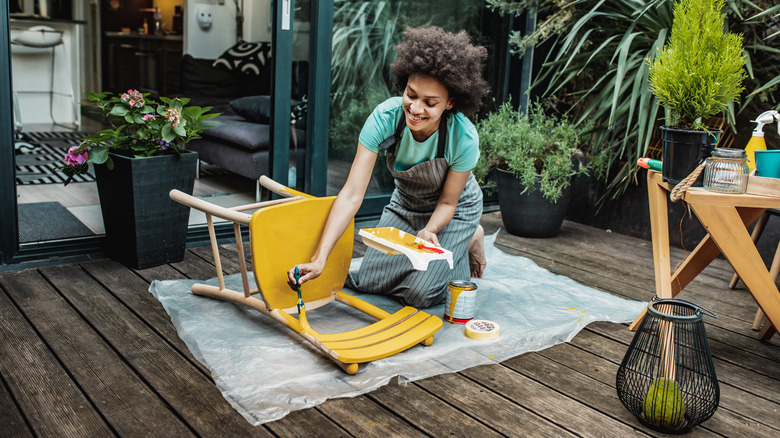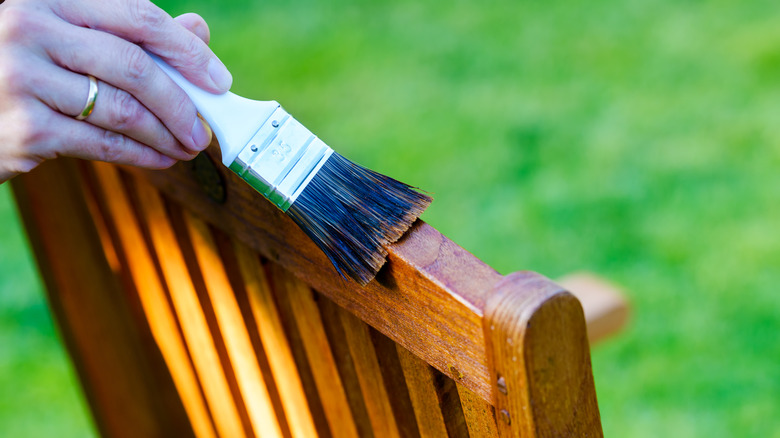Are You Making One Of The Biggest Mistakes When Painting Furniture?
Imagine the satisfaction of using paint to transform a once battered or out-of-fashion piece of furniture into a radiant centerpiece for your home at a price that won't empty your pockets. Talk about a DIYer's dream come true. But watch out. Amidst the artistic whirlwind, a subtle misstep could quickly catapult your labor straight into the "Failed Pinterest Attempts" hall of fame: choosing the wrong brush. Venturing down this DIY path with the incorrect brush type or, heaven forbid, cutting corners with a cheap one can impair the benefits of your makeover in more ways than one. Picture a natural fiber brush paired with acrylic paint; the resultant color variations could leave your prized furniture resembling more like a polka-dotted mess.
The antidote lies in channeling your efforts into finding your brush soulmate. For instance, natural-bristle brush excels with oil-based paints. Brush blunders aside, other mishaps lurk in the shadows, like furniture painting ninjas waiting to sabotage your efforts. Examples include painting in a humid environment (think slow drying and unwelcome brushstrokes), neglecting surface preparation, slathering on the paint thick and heavy, and hustling through the drying intervals between coats. In short, Aunt Mabel might still recognize her old dresser at the next family gathering but not in a good way.
Reckless paintbrush choice spells disaster for furniture
Embarking on a DIY furniture painting project ignites the same joy as finding a forgotten $20 bill in seldom-used jeans. Yet, the euphoria could quickly dissipate if you skimp on one crucial aspect: the paintbrush. Going cheap on your brush is almost equivalent to substituting a shovel with a plastic spoon. It could warrant a price tag on your sanity, as it's notorious for leaving behind a lifetime of brush marks. Not to mention their tendency to transform your painting into a primal hunt for stray, loose bristles lodged in your soon-to-be masterpiece. Although reusing an old brush is tempting, caution must carry the day. These weathered warriors often bear blemishes of previous paint jobs, with their bristles stuck together in rebellion against the smooth finish you desire (Think of streaks resembling scars of forgotten battles).
Using the wrong type of bristles with different paints is similar to pairing a rich vintage Cabernet Sauvignon with old takeout pizza: a definite no-no. This particularly holds when comparing natural fibers versus synthetic bristles and their compatibility — or lack thereof — with water, chalk, and oil-based paints. For instance, the unfortunate union of water-based paint with a natural-bristled brush tells a tale of mournful inconsistency. Made from animal hair, natural bristles have an annoying thirst for water, causing them to swell and lose shape with water-based paints. On the other hand, a synthetic brush paired with an oil-based product will not work as well as a natural-bristled alternative.
How to get the most out of your furniture paint brush
Don't let brush-related pitfalls jeopardize your furniture painting adventure. Enter the world of premium paintbrushes. High-grade bristles, albeit pricier, render your furniture with an alluring, streak-free finish and stand the test of time — a worthy investment for your painterly treasury. Please pay special attention to the ferrule (the metal collar holding the bristles together); it should flaunt a dense bristle population. Besides, subject those hairs to a flex test; a tenacious resolve to snap back into their natural shape is non-negotiable. And the perfect handle? Think of a handshake: an assertive yet warm presence in your palm.
But again, should your brush allegiance lie with natural or artificial materials? Natural bristles, the sophisticates of the brush world, offer a smoother, cleaner finish, but they're strictly to be used with oil or chalk-based paints. On the other hand, the synthetic counterparts, made of nylon or polyester, gladly tango with water-based products. Lastly, let's discuss design. Oval paint brushes, which can minimize the risk of dreadful brush stroke marks, much like your favorite concealer. They're also handy for the utmost precision when covering curves and delicate details. But their narrower profile can mean extended painting duration. So, if pressed for time or tainting larger surface areas, the wider, conventional version would be your BFF.


